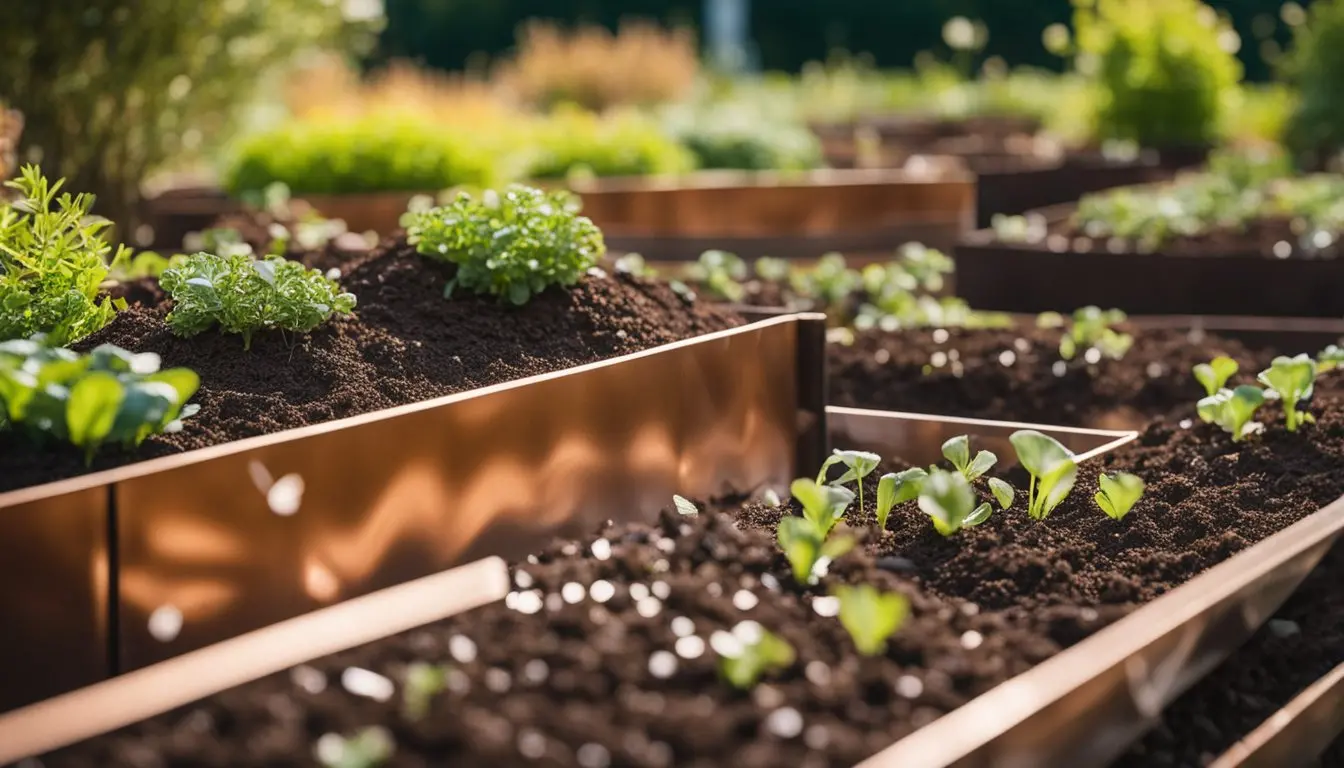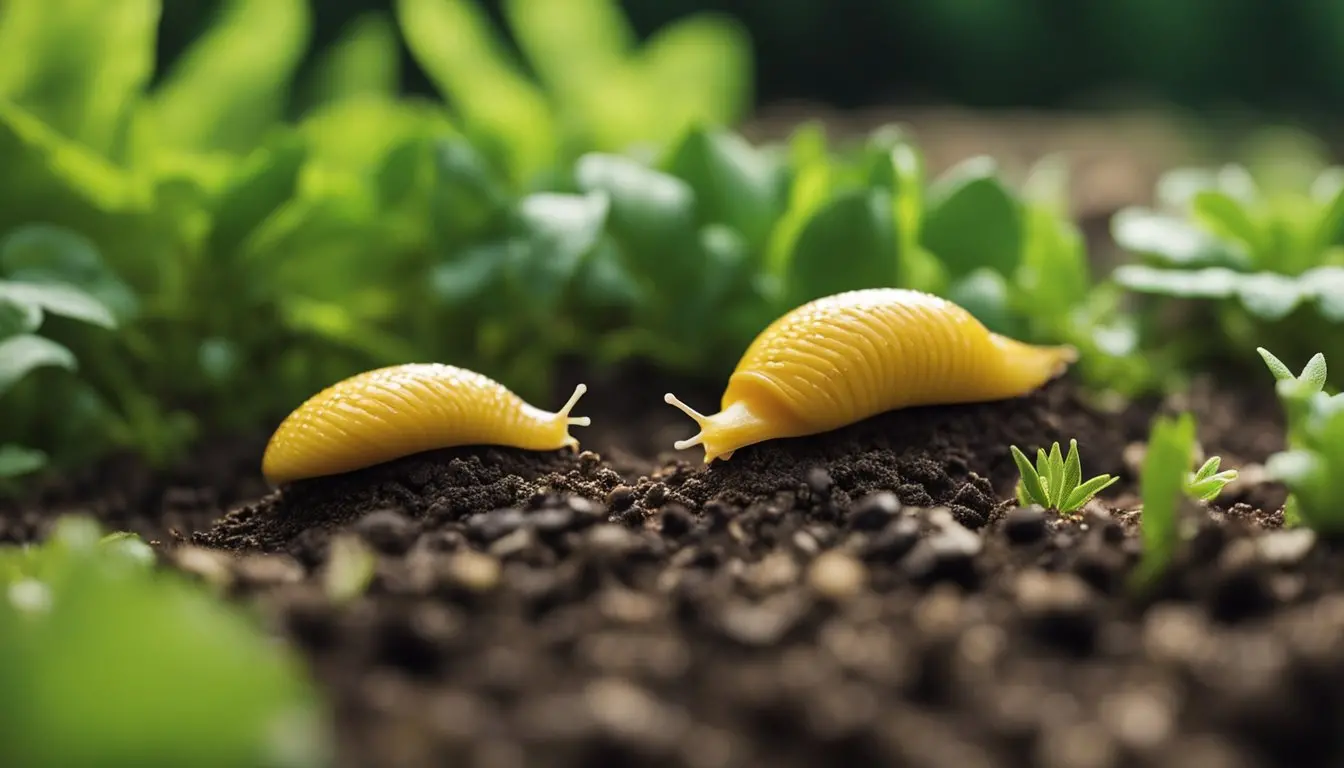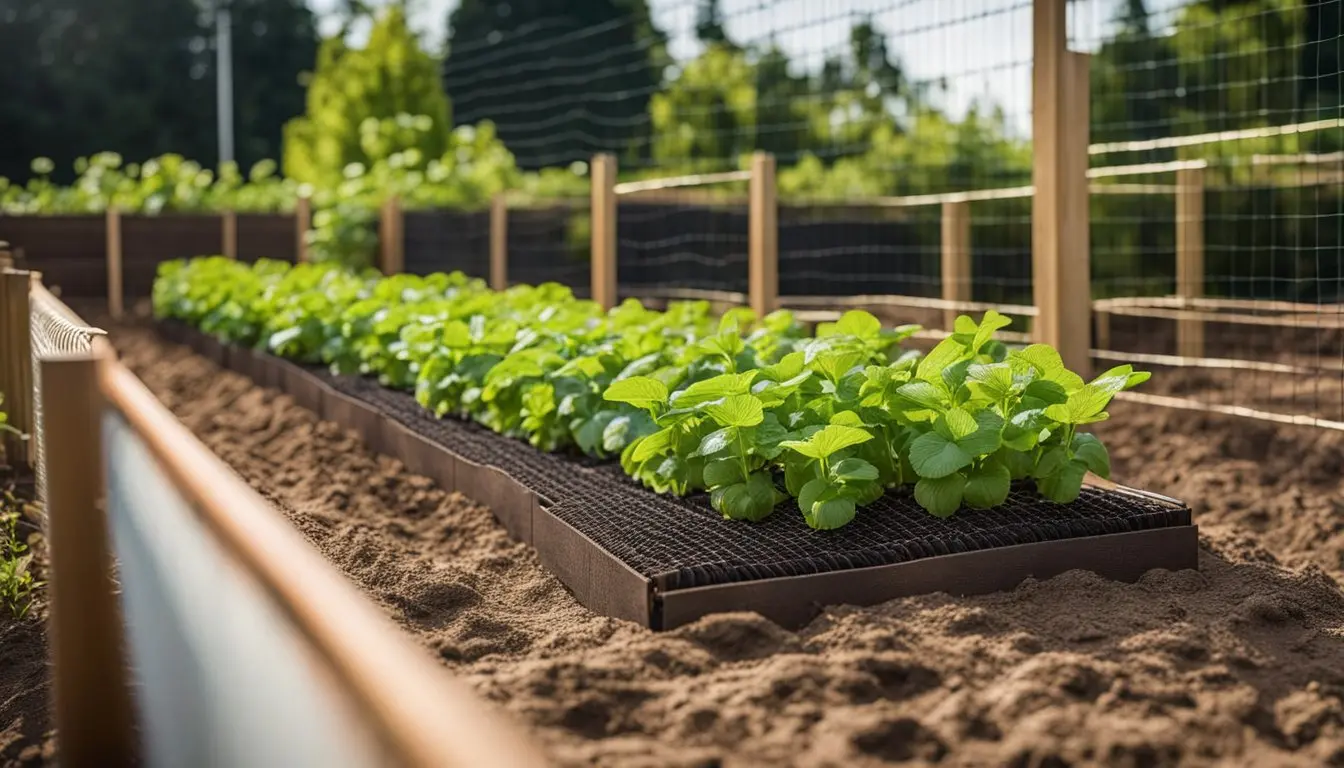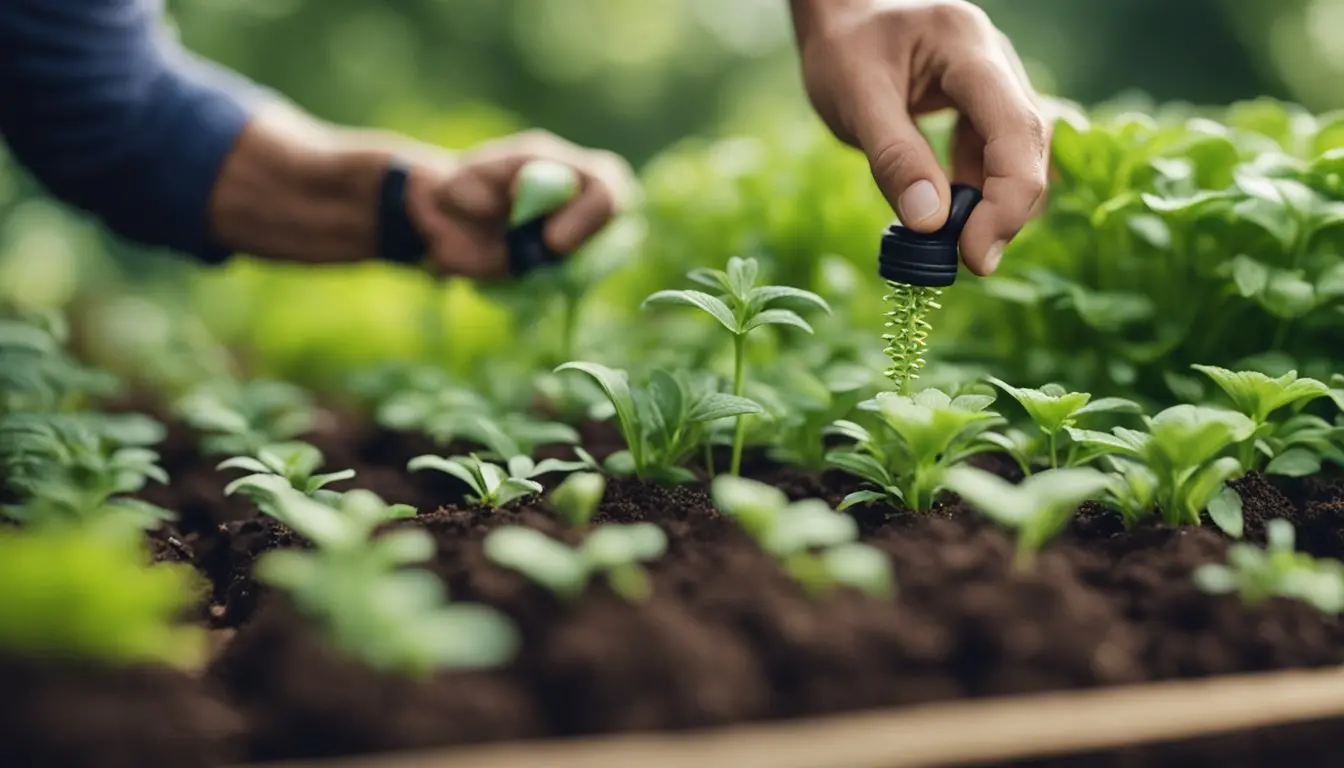Slugs are a common issue in gardens, causing damage to a wide array of plants by chewing on leaves, stems, and flowers. Understanding slug behavior is crucial for preventing these pests from becoming a problem in your garden. They are mostly active at night and prefer moist conditions, meaning that gardens with heavy soil, dense plantings, or those that receive regular watering can be more susceptible to slug infestations. To protect your garden, it is essential to implement strategies that dissuade slug activity and prevent it from taking over your outdoor space.

Develop a comprehensive approach to managing these mollusks by assessing the vulnerability of your garden and employing various preventive measures. Physical barriers such as copper strips can deter slugs while encouraging natural predators like birds and beetles to enhance biological control. Additionally, selecting the right plants that are less attractive to slugs and maintaining healthy soil can significantly reduce the likelihood of infestation. To maintain a thriving garden, routine monitoring and adapting your approach based on slug activity are key. By properly managing the conditions that attract slugs and being proactive in your gardening practices, you can minimize the impact of these garden pests.
Key Takeaways
- Slugs thrive in moist conditions and can damage many garden plants.
- Employing physical barriers and biological controls can help prevent slug infestations.
- Selecting resistant plants and maintaining garden health is essential to deterring slugs.
Table of Contents
Understanding Slug Behavior

To effectively prevent slug infestations in your garden, you need to understand their dietary habits, breeding patterns, and preferences for weather conditions.
Slug Diet Preferences
Slugs are primarily herbivores, favoring a diet that includes a wide variety of living plants. They are particularly drawn to leafy greens like lettuce and cabbage, along with fruits, such as strawberries and tomatoes. However, they’ll also eat decomposing plant matter, which can be beneficial for your garden.
Slug Reproduction
Reproduction rates for slugs can be alarming. Each slug is hermaphroditic, meaning they have both male and female reproductive organs, which allows any two slugs to mate. After mating, both can lay up to 30 eggs at a time in moist soil or under debris. These eggs hatch in a few days, contributing to rapid population growth.
Slugs and Weather Conditions
Slugs require moisture to survive, so they thrive in damp environments. They are most active during rainy seasons or at night when the humidity is higher. During dry conditions, slugs seek out hidden, moist microclimates within your garden, so frequently watering your garden could inadvertently create an inviting habitat for slugs.
Garden Vulnerability Assessment
Before taking action to protect your garden from slugs, it’s important to assess its vulnerability comprehensively.
Identifying At-Risk Areas
- Moist and shaded areas: Slugs prefer moist environments, so check for spots where water tends to accumulate or where irrigation is heavy.
- Ground cover and debris: Inspect areas with dense plant cover, leaf litter, or mulch, as these are ideal hiding spots for slugs during the day.
Common Plant Targets
- Young Seedlings: Slugs are known to feed on the tender leaves of young plants.
- Leafy Vegetables: Favorites include lettuce, cabbage, and spinach, which provide a substantial food source.
Physical Barriers and Obstacles

Implementing physical barriers and obstacles can be an effective way to deter slugs from reaching your plants. These preventative measures create a hostile environment for slugs, making it difficult for them to access and damage your garden.
Copper Tape
You can protect your plants with copper tape, which you affix to the edges of planters or garden beds. Slugs experience a natural aversion to copper and receive a mild electrical shock upon contact, which discourages them from crossing the barrier.
Sharp Gravel Edges
Creating a perimeter with sharp gravel edges around your plants acts as a physical deterrent to slugs. The sharp and uncomfortable surface is undesirable for slugs to crawl over, thus protecting your plants from their approach.
Elevated Planters
Elevating your plants off the ground using elevated planters helps prevent slug access. Slugs are less likely to reach and damage plants positioned above ground level, providing an additional layer of defense against these garden pests.
Natural Predators and Biological Control

Implementing natural predators and biological control methods can significantly reduce slug populations in your garden without the use of chemicals.
Attracting Beneficial Wildlife
To naturally keep slug numbers in check, encourage predators to your garden space. Birds, frogs, and hedgehogs are voracious consumers of slugs. You can make your garden more attractive to these helpers by:
- Creating habitats: Leave piles of logs for hedgehogs and toads.
- Installing a pond: Even a small water feature can attract frog species.
- Avoiding pesticides: They can harm the creatures that feed on slugs.
Nematode Application
Applying nematodes, microscopic parasites specific to slugs, is an effective biological control method. These nematodes enter slugs’ bodies and release bacteria that cause a fatal infection.
- Purchase: Buy nematodes from reputable suppliers.
- Timing: Apply to moist soil in spring or fall when soil temperatures are between 5°C and 20°C (41°F to 68°F).
- Watering: Keep the soil moist to ensure nematodes move freely.
By incorporating these strategies, you can maintain a balanced ecosystem in your garden and mitigate slug issues naturally.
Chemical and Organic Repellents
To protect your garden from slugs, it’s essential to consider both chemical and organic repellent options. While chemical solutions are often quick-acting, organic methods can provide safe and sustainable alternatives.
Slug Pellets
Slug pellets are a common chemical control method, designed to attract and poison slugs. It’s important to use these pellets cautiously as they can harm non-target wildlife and pets. When selecting slug pellets, look for those labeled as pet-safe or wildlife-friendly to reduce the risk to other garden inhabitants.
Diatomaceous Earth
Diatomaceous earth is a non-toxic, organic powder made from fossilized algae. Sprinkle it around plants most susceptible to slug damage; its microscopic sharp edges deter and dehydrate slugs upon contact. Be aware that diatomaceous earth needs to be reapplied after rain or watering as it loses effectiveness when wet.
Organic Sprays
You can also create or purchase organic sprays that deter slugs by making the leaves of your plants less appealing. Ingredients often include substances like caffeine or bitter-tasting components. The application should be regular, as the effect can diminish over time or after exposure to the elements.
Use the techniques that best fit your garden’s needs and ethos, and remember to always follow the manufacturer’s instructions for any commercial repellents.
Irrigation and Water Management

Effective irrigation and water management are crucial for minimizing slug infestations in your garden. By understanding the relationship between watering practices and slug activity, you can create an environment that is less appealing to these pests.
Watering Schedules
- Morning Watering: Aim to water your garden early in the morning. This ensures that the soil and plants will dry off by evening, reducing the moisture that attracts slugs.
- Frequency: Water deeply but infrequently to encourage plants to develop deeper root systems and reduce the constant surface moisture that slugs thrive on.
Drainage Solutions
- Improve Soil Structure: Incorporate organic matter to enhance soil drainage and prevent waterlogging, which is a prime habitat for slugs.
- Use Raised Beds: Elevate your garden beds to improve drainage and create a physical barrier for slugs.
Cultivation and Soil Health
Improving soil health and proper cultivation techniques are pivotal steps in preventing slug infestations in your garden. Healthy soil supports robust plant growth, making your garden less inviting to slugs.
Soil Amendments
Adding organic matter to your soil can boost its fertility and structure, making it less attractive to slugs. You should consider incorporating compost or well-rotted manure into your garden beds. Both of these amendments improve drainage and aeration, discouraging the damp conditions slugs thrive in. For best results:
- Compost: Mix a 2-3 inch layer into the top 6 inches of soil.
- Manure: Ensure it is well-rotted to avoid burning plants and add a layer each planting season.
Tilling Practices
Tilling your soil can expose slug eggs and larvae to predators and the elements, reducing their population. However, it’s essential to till at the right time to avoid damaging the soil structure:
- Spring Tilling: Turn your soil in early spring to disrupt slug life cycles.
- Minimum Tillage: Consider no-till or reduced-till methods to preserve soil health and beneficial organisms.
By being mindful of soil amendments and tilling practices, you create an environment less conducive to slugs and maintain a healthy garden ecosystem.
Selecting Resistant Plants

Choosing the right plants for your garden can greatly reduce slug damage, as some plants naturally deter these pests.
Slug-Resistant Vegetation
- Alliums: Your garden can benefit from adding plants like onions, garlic, leeks, and chives. They produce allicin, which is toxic to slugs and can serve as a barrier when planted around susceptible areas.
- Geraniums: Consider the hardy geranium, specifically the variety ‘Rozanne’. It not only brings long-lasting blooms but is also recognized as slug-resistant.
- Catmint: With its strong scent, catmint is another excellent choice. It’s not favored by slugs and, as a bonus, attracts pollinators to your garden.
Remember, while these plants can help deter slugs, they’re part of an integrated approach to managing slug populations and should be used in conjunction with other prevention strategies.
Routine Monitoring and Maintenance
Maintaining a slug-free garden requires diligent attention and proactive measures to minimize infestations. Consistent garden care is pivotal in keeping these pests at bay.
Regular Garden Checks
Frequency is Key: To detect slugs early, inspect your plants and the soil surrounding them several times a week, especially after rainfall or watering. Look for silvery trails on leaves and the ground, which indicate slug activity.
- Morning Inspection: Early morning is the best time to spot slugs as they return to their hiding places after a night of feeding.
- Evening Patrol: A quick check during the evening can also be effective since slugs are nocturnal creatures.
By establishing this routine, you can catch slugs before they cause significant damage to your plants.
Removing Slugs by Hand
Direct Action: When you find slugs, the most immediate solution is to remove them by hand. It’s a simple yet effective method to control their population.
| Steps for Hand-Picking Slugs |
|---|
| Use gloves to protect your hands. |
| Collect slugs in a container. |
| Relocate or dispose of them appropriately. |
Regular removal will help reduce the slug population and minimize the harm to your garden. For additional strategies to get rid of snails in your garden, look into techniques that complement manual removal such as traps and barriers. Combining these methods enhances your garden’s defense against these common pests.
Community Involvement and Education
Involving your community and educating your neighbors are potent strategies to tackle slug infestations proactively. Here’s how you can make a collective effort to keep your gardens slug-free.
Neighborhood Workshops
Organizing neighborhood workshops is an effective way to collectively address slug problems. These workshops could be hosted by local gardening clubs or interested residents proficient in slug prevention. During such gatherings, you could collectively purchase slug-resistant plant varieties or barrier materials in bulk, reducing costs for everyone involved.
Sharing Best Practices
Sharing best practices can immensely benefit your community’s gardens. Compile a list of the most effective slug repellents—like diatomaceous earth or barriers like copper tape—that have worked for you and distribute this information through community channels. You might consider creating a simple flyer with tips on how to Remove and Prevent Slugs In The Garden or an email list for residents to report and track active infestations, and share what interventions are working.
Frequently Asked Questions

In addressing common concerns about slug control in your garden, this section gathers straightforward answers that leverage natural and effective methods.
How can I create a natural repellent to keep slugs out of my garden?
Creating a natural repellent involves using substances slugs find distasteful, such as a sprinkle of coffee grounds or a solution of water and vinegar sprayed around the plants.
What are some effective plants that repel slugs and can be grown in a garden?
Plants like astilbes and ferns are known for their slug-repelling properties. By incorporating these plants, you create a natural barrier against slugs.
What are proven strategies for preventing slug infestations in the garden during nighttime?
One proven strategy is to remove potential slug hideouts, such as piles of leaves or garden debris, and to water your garden in the morning rather than the evening, as slugs thrive in damp conditions.
Are there any homemade solutions to deter slugs from invading the garden?
Yes, you can set up beer traps to attract and capture slugs. Simply fill a shallow container with beer and place it near susceptible plants.
What are the main causes of slug infestations in garden spaces?
Slug infestations typically result from a combination of damp soil, dense vegetation, and the presence of organic debris, which are ideal conditions for slugs to thrive and reproduce.
How can you remove slugs from your garden without harming the vegetation?
You can physically remove slugs by handpicking them at night or early morning. Alternatively, setting up barriers made of copper tape around raised beds or pots can help keep slugs at bay.
- Best Brush Cutter: Top 5 Models for Lawn Maintenance in 2024 - January 10, 2024
- Protecting Your Garden from Rodent Damage: Tips and Tricks - December 14, 2023
- Small Space Gardening: Transform Your Garden with Raised Beds - December 10, 2023
